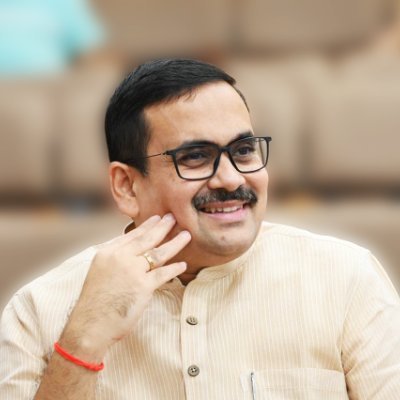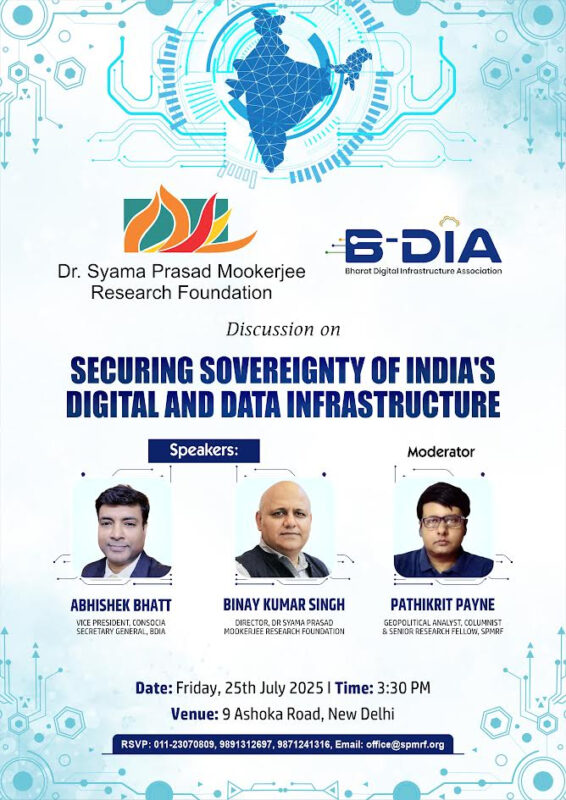The idea of India envisioned during freedom struggle is being revived in full vigour which, unfortunately, was lacking for a long time since independence
Prime Minister Narendra Modi has given the mantra of ‘Amrit Kaal’, a quarter century period in which India must strive to assume the status of a global power, recognised for her ability to do things differently. Amrit Kaal stretches from the 75th year of India’s independence to the centenary of her freedom in 2047. It is a period which is crucial, defining and holds within it infinite possibilities and scope. Our actions and direction in this phase which is also full of symbolism will define and shape the India of our aspirations and the aspirations of countless those who had struggled for India’s freedom. For these apostles in India’s fight for freedom, India was beyond just being a mere physical space. In their vision India was a living entity, ideational and spiritual and cultural. Sri Aurobindo’s tract, ‘Bhavani Mandir’, written during early years of the freedom struggle, for instance, describes this vision best.
In fact, when asked whether when he wrote that he looked upon India “not as an inert, dead mass of matter, but as the very Mother, the living Mother” it was the “truth” or whether “it was just the expression of a poetic or patriotic sentiment?” Sri Aurobindo replied, to his amanuensis Nirodbaran, “My dear Sir, I am not a materialist. If I had seen India as only a geographical area with a number of more or less interesting people in it, I would hardly have gone out of my way to do all that for the said area…” Sri Aurobindo was emphatic that “we had in India the cultural and spiritual idea of the nation.” Revolutionaries who defined and shaped the Indian freedom movement since its early years generated a vibrant narrative which sought to actualise this vision. This essence of the narrative of the ‘motherland’ differentiated the ideational base of the Indian freedom movement from those of others.
Those belonging to the generations which had sacrificed themselves for India’s freedom also nurtured a vision and aspiration for India. Even when freedom seemed an impossible goal, they ideated and contemplated, in the midst of intense struggle, on the direction India would take. To a disciple who asked him whether in his scheme of things he saw India free, Sri Aurobindo exuded a greater worry when he said that India’s freedom was a settled affair and it was “a question of working out only”, but the larger question for him was what “is India going to do with her independence? Would it be besieged with “Bolshevism?” or plagued with “goonda raj”?
These leaders of our freedom movement had aspired for India to be free and to re-position herself as a great power in the world. Many of them, while in the midst of the struggle, also wrote and ideated on the vision of a great India, an India conscious of her cultural and spiritual strength, capable of perfecting her material skills and potential, an India at the forefront of imparting a new vision of education, of cooperation, of governance, an India imparting to the world new ideas, an India which would astutely guard and perpetuate her national interests, an India which would not be a pushover and would display an independent spirit and capacity to take stands in consonance with her aspirations and interests, play hardball and yet be recognised as a responsible power. They had imagined an India which would be recognised as a beneficent power, as a power identified with humanism and compassion, a power that can be looked upon with hope by the hitherto marginalised, discriminated and ignored. They had also aspired for an India that would generate new-thought, new discoveries, a civilisational democracy which would establish a new narrative of democracy attuned to her civilisational experience and wisdom.
Post-independence these aspirations remained unfulfilled. For decades a Nehruvian India was compelled to base herself on shallow philosophies and vacuous visions of a great-power status. This delayed and prevented the articulation and the working out of her essential aspirations, its neglect of basics as well as that of a grand vision and narrative were visible. Even when India made a decisive intervention and counter in 1965 and the 1971, it bartered away or abdicated its advantages in order to prop itself up on an illusory moral scaffolding. It did have the political will and wisdom to foresee the retarding impact of such an abdication. The stranglehold of the communists and other ideologies of deconstructionism over policy making and political narrative generation ensured that the civilisational idea of India could never be restated. That is now changing and changing irreversibly.
Amrit Kaal offers a collective opportunity to realise Prime Minister Narendra Modi’s vision and call for transforming India and propelling her to the status of a civilisational power by the time she commemorates the centenary of Swaraj. The India that is preparing itself in Amrit Kaal, is moving to realise these aspirations. Across a wide spectrum, a multi-pronged action of national progress is visible. This action is laying the unshakable foundations of a new India. The effort is inching forward despite opposition, subterfuge and a humongous attempt by a certain quarter to delay that rise and to keep India tied to the apron strings of other powers. The consciousness of Amrit Kaal is challenging that mindset which is repeatedly attempting to delay and divert India’s progress-march.
Speaking in the early years after independence, Syama Prasad Mookerjee, had observed that “The struggle for freedom has ceased to be. But the freedom that has come must be maintained and enriched. There looms ahead the much greater struggle on the home front against our old enemies – hunger, poverty, ignorance and disease and their attendant host of social evils. The hour has struck for launching this struggle, and victory is certain if, as we are sure, every citizen joins in this effort, offers his willing cooperation and makes the necessary sacrifice.” This hope is being realised comprehensively, Prime Minister Modi’s repeated call for ‘Jan Bhagidari’ in order to fundamentally transform India has found resonance and effect. In Amrit Kaal, India aims to tackle both the old enemies and new adversaries and is resolutely moving towards realising the ideals that activated and drove her epic struggle for freedom.
(The writer is a member of National Executive Committee (NEC), BJP, and the Hony. Director of Dr Syama Prasad Mookerjee Research Foundation. Views expressed are personal)
This article was published in Millenium Post on 10th March 2022
(The views expressed are the author's own and do not necessarily reflect the position of the organisation)



